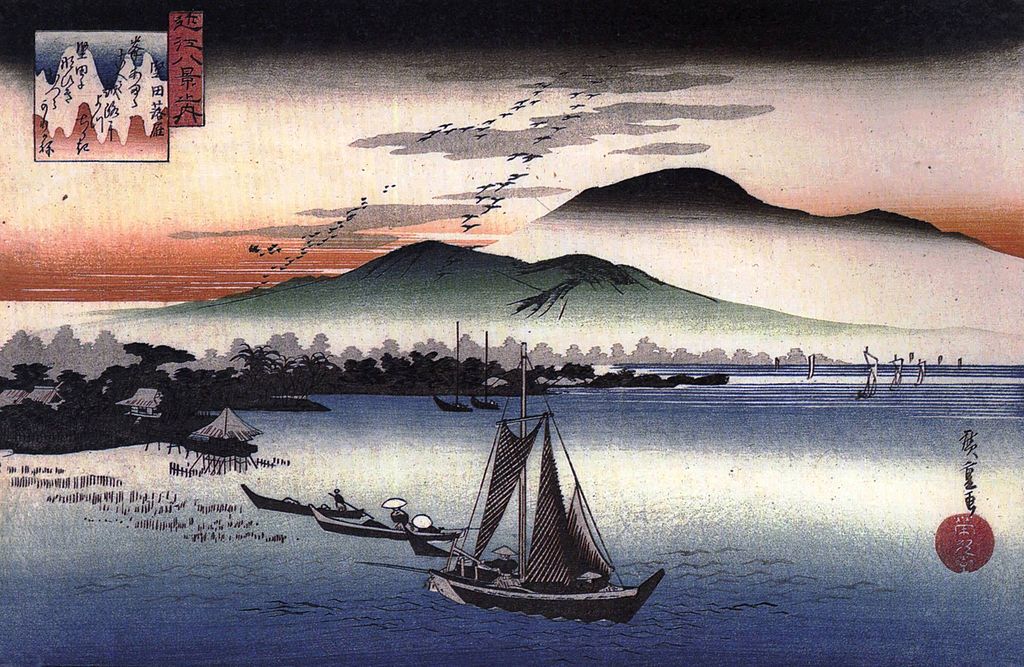Image-thinking versus metaphysical thinking
“Whereas in East Asia chaos is in the heavens and cosmos is on the earth, in the West the opposite is the case. The cosmos is in the heavenly realm and chaos exists immanently in all things of the earth.”
Yuasa Yasuo
Opposing East and West on the basis of their contrasting modes of thinking, is nothing new. Studies on this theme are usually found in works by Western scholars. Now that the East has by and large adopted Western rationalism, Eastern scholars have been able to study the Western mode of thinking, and can now shed new light on the question from their own perspective. In Overcoming Modernity – Synchronicity and Image-Thinking, Yuasa Yasuo (1925-2005) offers us an in-depth analysis of the traditional East Asian understanding of reality as well as a fresh look at the origins of Western rationalism in the works of Plato and Aristotle.
Image-thinking: an original unity attested in the system of primary elements in all three cultural zones
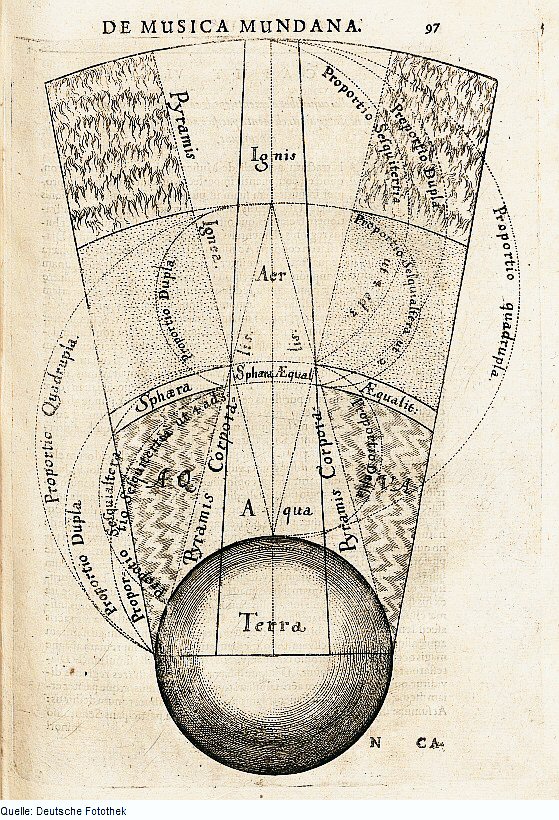
Ancient Greece, India and China shared a system of four or five primary elements, which Yuasa sees as evidence of a particular type of thinking he calls “image-thinking.” The three cultural zones inherited this way of thinking from early pre-literate peoples who saw nature as filled with life, with no separation between spirit and matter. What is now referred to as “panpsychism” is a view that grasps the natural world through concrete images conducive to an attunement with its many phenomena. It is an intuitive grasp of the whole, led by the image, rooted in a feeling. In contrast, we will see that metaphysical thinking as well as calculative thinking, its modern corollary now prevalent in the West, involve an “analysis” breaking down into parts what one is trying to understand, followed by a “synthesis” rearranging these parts into a meaningful whole.
In Greece, the Milesian school saw the natural world as arising from the activity of four archai, corresponding to the four elements – earth, water, fire, and air. But, Yuasa insists, “what Thales called “water” was not [just] the water we see in our everyday life, but was a symbolic expression designating the invisible power that operates within nature.”
The first move away from image-thinking took place in Greece when two philosophers conceived of the arche as an abstract principle rather than as the concrete image provided by the element. For Anaximander, the arche was the apeiron – the indefinite – and for Democritus it was the atom – that is, the principle of indivisibility.
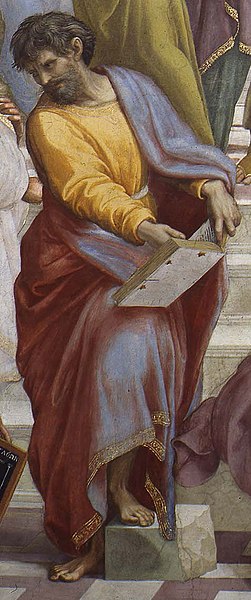
In a second move, “Parmenides of the Eleatic school held the eternal “on” (being) as the arche.” Taking “Being” as the arche meant a lot more than the naive acknowledgment of sensory data. “On” is the etymological origin of the word “ontology.” With “the eternal “on,” Parmenides introduced “permanence” as the criterion that defined being.” This, in turn, led to Plato’s theory of Ideas, and the location of permanence in a supra-sensory metaphysical order. The search for an arche can be explained as an attempt to organise our perceptions into a pattern that makes sense of the world, first and foremost for practical purposes. However, when the arche is posited as “being,” defined as eternal, there is, in addition to practical necessities, a craving for permanence, a solid ground and, in time, it develops into a quest for control.
In China, change, created by the flow of life throughout all life-forms, with all the uncertainty that it entails, was accepted as a fact of life. One of China’s oldest classics is the Yijing (Book of Changes) – a book of divination which was meant to help a person prepare for the future. In fact, as Yuasa explains, Yijing’s divination was not, as such, a prediction of future events, but a grasp of what would, or at least could, happen if whoever the reading was for, continued to live the way they did at the time. Knowing this, the person concerned could mend their ways, as a better relation with the world would bring a better outcome. The assumption here is that we should work with nature rather than attempt to control it.
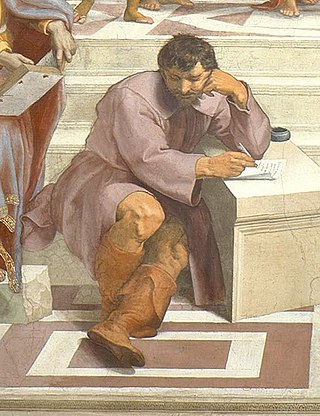
A focus on change is also associated with Heraclitus, the pre-Socratic philosopher famous for having stated that “everything is in flux (panta rei).” He lived in the same period as Parmenides, and has attracted a lot of attention among Western philosophers because he appears to contradict Parmenides’ views on Being. Martin Heidegger, however, was adamant that Heraclitus’ understanding of Being was the same as that of Parmenides. Hans-Georg Gadamer agrees with this interpretation, and points out that Heraclitus’ purpose when he talks about change is to show that, though all things appear to change, in fact, they are One in their true being. The first fragment of his only work On Nature, gives us a clue: “From this Logos, that we have here, which always is, people show themselves uncomprehending and without understanding, both before they have heard it, and also after they have heard it for the first time.” People keep looking at the change, and never understand that all things are One. “The separation into opposites testifies generally to the unitary essence of things and their true being.” This may sound like the Buddhist doctrine of co-dependent origination, but whereas Buddhism sees the One behind the Many as empty of own being, what fascinated Heraclitus was “the Mystery of the One in Many,” the one Being behind the many apparent forms. Heraclitus’ view is closer to the Upanisads’ view of Brahman, illustrated with the example of clay, the real being of all the things that are made of clay. This is no accident. In The Shape of Ancient Thought, Thomas McEvilley argues that Pre-Socratic philosophers and the authors of the Upanisads influenced each other as they met and shared ideas at the court of the Persian emperor in the 6th and 5th centuries BCE.
Pictographic scripts support image-thinking, phonetic scripts encourage logical thinking

Because pre-literate cultures used image-thinking, early systems of writing – for example, in Egypt and China – used pictographic scripts. In the Mediterranean world, however, the Phoenicians developed a phonetic script, which the Greeks adopted. Whereas a pictograph retains a concrete image one can visualise, a phoneme is “a mere sign” that has lost any concrete link with what it represents, and a need arises for a “syntax” – that is, a system of connective words, declensions, verb tenses, etc. – to state explicitly the relations between the words. Logical thought, Yuasa argues, is much more likely to develop in cultures where a syntax is used. This may be taken to be at least one of the factors that led Greece, and Western culture as a whole, to use logic. Discrete words that are connected by a syntax indicating their relations encourage an understanding of reality as a set of independent “substantive” entities that have been ordered into a logical system. Hence, it is easy to see how it led to metaphysical thinking. This, we should note, is precisely the substantive thinking that Nagarjuna, the founder of the Madhyamaka school at the beginning of the first millennium, rejected when he argued that language superimposes a layer of abstract concepts that conceals concrete reality. That we use concepts in our attempt to know reality, he called a “cognitive default.”
In places like China, where a pictographic script has been in place throughout history, “something corresponding to syntax is originally lacking” (Nishi Junzo, quoted by Yuasa). In Yuasa’s words, “Individual words only float on the surface of meaning/thing-events, and their mutual synthetic connection is not shown in the words as linguistic expressions.” There is something incomplete that has to be completed by a return to the concrete world. Whereas logical thinking represents reality in terms of separate entities linked by relations, image-thinking intuits reality as networks of dynamic relations generating the things we see. To give an example to be used as a metaphor, electrical current generates the positive and negative poles which could not exist without it. The poles cannot be described as independent entities at any point in their existence. What we call “electricity” is the energy generated between the poles.
Plato’s Timaeus: Being resides in the Ideas in an (abstract) supra-sensory world
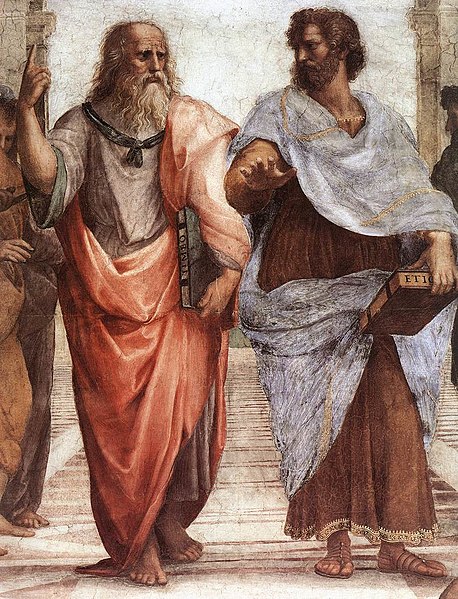
Parmenides, who defined the arche as “on,” (Being) in the sense of “what is eternal,” i.e., unchangeable, exerted a decisive influence on Plato, who wrote a dialogue on his famous Poem. A suprasensory world exists – referred to as metaphysics – where Being resides in the Ideas (eidos), a set of Ideal Forms, in a pre-existing order which we, humans, strive to know. The things perceived by our senses are mere copies of these Ideal Forms. In the Timaeus, “Plato relates that God as the demiurge created the world while commanding a view of the heavenly, ideal world, which is the perfectly good, beautiful, [and true]. God [then] endowed form to matter (hyle) which was formless chaos, using the ideal world as a model. Here, in contrast with the perfect, eternal, and unchanging cosmos in the heavenly world, the being of all things on the earth is delimited by matter that has chaos as its essential nature” (Yuasa). “Cosmos” is here used in its Greek sense of “perfect order” (a meaning it has since lost to become a mere synonym of universe) and “chaos” means “empty of form,” rather than disorder. Here comes into view Yuasa’s formula, quoted above, where is encapsulated the contrast between the Greek and Chinese worldviews: in Greece, “the cosmos is in the heavenly realm and chaos exists immanently in all things of the earth.” As we will see below, in China, “chaos is in the heavens and cosmos in on the earth.”
For Aristotle, “to know a thing is to name it.”
Alfred Whitehead stated that “the safest general characterization of the European philosophical tradition is that it consists of a series of footnotes to Plato.” Yet, when Martin Heidegger embarked on his quest for the origin of the Western mode of thinking, he turned to Aristotle, a student at the Academy in Athens, and a disciple of Plato. So also, and independently, did Nishida Kitaro, the founder of the Kyoto School of Philosophy. Emulating Plato, Aristotle also went back to Parmenides, but he interpreted his Poem in a different way. Plato had emphasised the supra-sensory transcendence of the Ideas. Aristotle, who had spent time studying the physical world, saw the Ideas as abstracted from our sensory perceptions of the world. Therefore, the way to discover the Ideas was by watching the natural world, and inducting the transcendental Ideas from their manifestations in reality. The words/concepts we use to apprehend the things of the world are, as such, what the things are. It is their being. The quote used by Heidegger to describe the identity of language and being in Aristotle is in fact borrowed from Parmenides: “to gar auto noein estin te kai enai,” which Heidegger in one of his last seminars, translated as “thinking (learning) and being (presence) belong together” (Zähringen Seminar 1973). Hence, the famous statement by Heidegger that “language is the house of Being.” Nishida, likewise, states that, for Aristotle, “to know a thing is to name it” (Robert E Carter in his study of Nishida’s thought). The being of a thing is to be found behind, or under, its sensory appearance, in the Idea on which it has its foundation, and this means that it can only be grasped through thinking. This is what is referred to as seeing reality in terms of “substance.” The word “substance,” comes from the Latin substantia and substare, “to stand firm, be under, or present,” from sub, under, and stare, to stand. The Ideas that are more real than what manifests to our senses are assumed to support the world. Aristotle refers to them as the sub-stratum underlying change. “The concept of substance points to that which makes a thing to be what it is and makes it preserve its self-identity in spite of the incessant changes that occur in its various “accidental” properties” (Nishitani Keiji).
Image-thinking was associated with Indian indigenous yogic practices while “being” was associated with Brahmanism
Pursuing his investigation of the primary elements as evidence of image-thinking, Yuasa turns to India, and notes that “the Indian idea of understanding nature in light of the five elements dates as far back as the Upanisads of the 6th century BCE.” Even though there is in India a fifth element – the sky – the idea of using the primary elements to represent the way the world operates may have come from Greece. It could also have come from a common source, for instance, Babylonian traditions which, according to Thomas McEvilley, helped shape the indigenous yoga-based alchemical tradition that had survived among the sramanas, with whom the future Buddha practiced during his quest. The Upanisads already integrate the Vedic religious lore brought to India by the Indo-Aryan migrations, and that of the indigenous population of the Indian subcontinent, which inherited their religious ideas and practices from the ancient Indus Valley civilisation, which itself had been in close contact with Babylonia. Yuasa states that the image of the elements were ”associated with the yogic theories of self-cultivation and Indian medecine (ayurveda),” which both belong to the indigenous pre-Aryan cultural legacy.
Yuasa also states that the 5th element – sky – which is unique to India, was reformulated as sunyata (emptiness) by Mahayana Buddhism, in the “five mandala rings” which he describes as being at once a symbolic representation of the essence of the mind, and a symbolic representation of the fundamental structure of the cosmos, therefore implying a correspondence between the two. This, again, locates image-thinking on the side of Buddhism, which was an offshoot of yoga. Though Brahmans had begun to join the sramanic communities with whom the Buddha practiced, the core of the Brahmanical worldview was, like that of the Greeks, steeped in ontology with Brahman conceived as a Higher Being. Its understanding of Being was different – Brahman was formless, while the Greeks’ eidos are Ideal Forms, but in both cases, Being was seen in terms of substance or even essence in the Indian case, with the same emphasis on permanence as criterion for true Being. In contrast to the formless eternal Brahman, in India, forms were seen as impermanent, and therefore illusory.
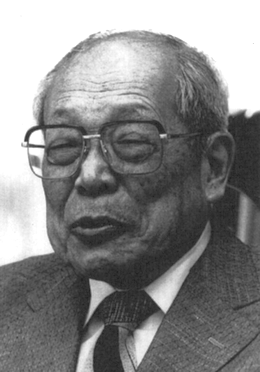
As Japanese scholar Nakamura Hajime remarked, Vedic Indo-Aryan thought had “a propensity for the abstract notion, in their way of thinking an abstract idea is expressed as if it were a concrete object, i.e., in their thinking process the universal is easily endowed with substantiality.” For instance, the “way of the gods” and the “way of the fathers” followed by the dead, are described as going through the day, the night, the half-month, six months, as if these were concrete things. “The Sanskrit expresses the individual only as one of the instances belonging to the abstract universal.” The abstract had become the concrete actual and obliterated it. It is precisely this propensity for the abstract that the Buddha rejected, not, however, directly at the theoretical level, but through his famous “silences” when asked questioned about “cosmology” – that is, “metaphysical questions.” Rather than waste time with a speculative discusion, he taught his disciples a path of practice which could lead them to achieve a direct experience of reality.
In China, the doctrine of the five elements became the five “goings” and merged with the teachings of the Yin-Yang School
When Buddhism spread to China, Buddhist scholars escaped a world where they had to argue their rejection of Brahmanical ontological views using the deeply essentialist Sanskrit language, and entered a world where ultimate reality was the empty Dao, more congenial, though not similar, to their view of sunyata.
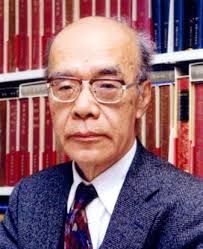
Yuasa says that the theory of the five elements spread to China through Esoteric Buddhism. There, the image took the form of the “five goings.” “Going” signifies something that moves and flows. This is a theory that considers the events of the human and natural worlds in light of the relationships among the five sign-images: wood, fire, earth, metal, and water.” Native Chinese elements, using the ancient mode of image-thinking, had already developed a view of the natural world. Such notions as the Dao, qi-energy, yin and yang, had created a view of a universe out of which life flowed into all the things we see including us, making us what we are, and instilling in us the idea that we could only thrive through cooperating with the whole. Even though Confucians and Legalists did, for political reasons, carry out a process of reification to justify their autocratic actions, arguing that “natural” equates “inevitable,” the concept of a dynamic universe has remained the spontaneous way populations in traditional East Asia have lived their relation to the natural world.
Unlike Heraclitus, the Chinese had not rejected the many as illusory. Their minds had believed what their eyes saw – the Ten Thousand Things – and they had focused on how to work with them, by learning how change unfolded. Practical solutions had already been provided by the Yin-Yang School, active as far back as the 12th century BCE, date at which the Yijing was composed. The two theories – yin-yang and the five elements – were synthesized into what is known as the Naturalist School by Zou Yan (305 – 240 BCE), a member of the Jixia Academy, where scholars of all parts of the land had been invited to share their knowledge. The concepts of that School were later incorporated into Daoism.
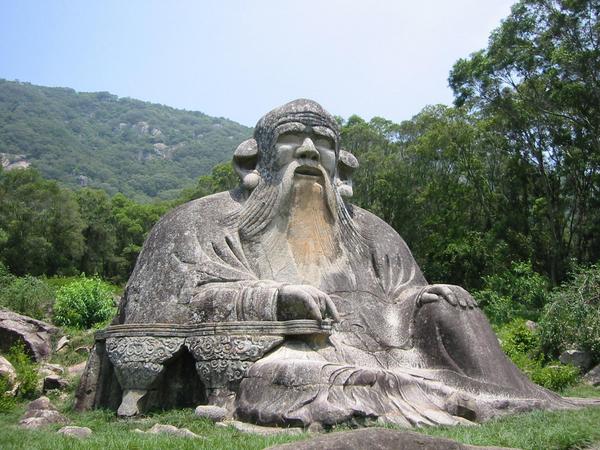
In East Asia chaos is in the heavens and cosmos is on the earth
For a first poetical glimpse of the Chinese’s view of reality, Yuasa quotes the 25th chapter of the Daodejing:
“There was something that is one, yet chaotic, which existed before the opening of the heavens and the earth. Soundless in silence, vague, and formless, it depends on nothing and cannot be changed by anything. It never stops breathing, manifesting itself in every phenomenon. It may be considered the Great Mother who gives birth to this world. I do not know even her name; I will call her Dao for the time being. If forces to give her a name, should I call her Great? Because it is great, it flows and moves and flowing and moving, it reaches far and wide. And if it reaches far and wide, it returns to its primordial ground.”
Yuasa comments: “That which is “soundless in silence, vague and formless” – this is nothing other than Chaos itself. Laozi states that the flowing activity issuing from Chaos as the primordial ground, named “Dao,” is that which generates and changes all things of the cosmos. However, where then is the cosmos (order) that is to be contrasted with chaos? It is housed in all the things on earth.”
“Chaos” is not normally what comes to mind when we hear the word Dao because it is often translated as “Way.” The word “Way” seems to imply a set form or direction. But Dao is also the source of all life-forms emerging out of the womb of the Great Mother – that is, a creative emptiness that is formless. We can imagine the Dao as a a field of energy, while the cosmos (in the sense of order) arises when we make sense of our perceptions, and turn them into a meaningful order. This is akin to what happens when modern physicists attempt to understand quantum waves by measuring them, an action that transforms the waves (energy) into particles (matter), in fact, abstract mathematical formulas. Physicists despair at not being able to actually cognise the wave as it is before it is measured. This is, however, a predicament we are all in, as our interpretation of reality turned what was a living formless invisible chaos into a material meaningful order of forms. Though this is a fact arising from the way consciousness works, and cannot be helped, we would do well not to forget that our words and our mathematical formulas are mere practical tools, and not reality as such, they only point to it. Seeing “being” in these words and formulas amounts to reifying a moving flow into a fixed representation, something like reducing a whole film to just one of its frames.
In Plato’s Timaeus, chaos was also described as formless. But it was the formlessness of matter, not that of the ultimate dynamic source/origin. Remember the words in the Timaeus: “God … endowed form to matter which was formless chaos, using the ideal world as a model.” We humans did not create the Ideas. In other words, there was a pre-existing transcendent order we could only try to decipher, while hampered here on earth by the chaotic nature of our material existence.
To sum up, in East Asia, humans, like all things, emerge out of the formless chaos, and create the forms of a cosmos, that is, a world that is meaningful for them. In Greece, humans receive the Ideal Forms from above, though they must interpret them while remaining constrained by the limitations of matter. They therefore have to make sure they are not preyed upon by the sensory world, and the affects arising from it, before they can properly contemplate the world of Ideas, where ultimate Being resides.
To be sure, because of the image of the Mother, that is more readily apprehended as Mother Earth, and also because the world of Ideas is a supra-sensory transcendent order, I tend to imagine the Dao as the opposite of transcendent, that is, immanent. But in the Yijing, the Dao is described as “that which is above form.” This is why Yuasa locates the chaos in the heavens. In the Xicifu, a commentary on the Yijing, “there is a famous passage that reads, ‘What is above form [keijijosha] – this is called the Dao; what is under form [keijikasha] – this is called the vessel’.” Yuasa insists that “what is above form … means a being “prior to form,” but it does not mean a being that goes beyond form. This is seen as the Dao that is Chaos. ‘Keijikasha,’ which corresponds to this, means ‘that which is under form’, that is, it designates all the things on the earth’.” Though the word “keijijosha” is often used to translate “metaphysics,” Yuasa says that “metaphysics is an ontology that treats of being in generality and in abstraction, and goes beyond the concrete and individual conditions of the being of the thing-events in nature that we experience.” What is “prior to form,” instead, is the formless Chaos that precedes the forms of the concrete world we experience.
One yin, one yang; this is called Dao

In another passage of the commentary, the Dao is described as an activity based on the interaction between yin and yang. “One yin, one yang; this is called Dao.” It states that “the activity that issues forth from the Dao is concretized through the interchange of the yin-yang phase change. Later, in order to indicate this activity, the term ki (Chin. qi) came to be used. That is, all things are generated and go through changes in virtue of the fact that the phases of the activity of ki, which issues forth from the Dao, alternates between yin and yang.” The process is explicited in the diagram of the Great Ultimate Origin. Out of the primordial origin – Dao (red circle) – issues the qi, segmenting into yin and yang that divide into the five goings of wood, fire, earth, metal and water. What nurtures all things under Heaven and on Earth is the activity of masculinity and femininity (circle below the five elements). “The circle at the very bottom of the figure is what is called in Laozi’s Daodejing the ‘gate of the female ox’, that is, the ‘grounding place’ wherein is hidden the activity of the ‘mysterious’ maternal nature that is the origin of all life.”
The Huayan School: “the mutual identity and interpenetration of all phenomena”
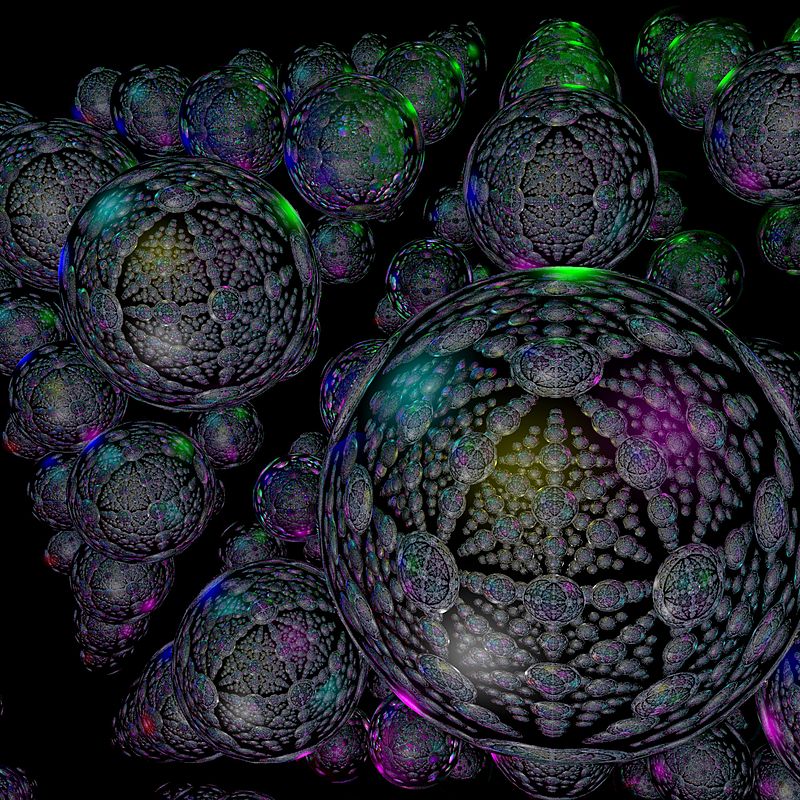
Buddhism provided a re-articulation of this dynamic Dao in the Huayan’s doctrine of “mutual identity and interpenetration of all phenomena” (substituting the interconnectedness based on co-dependent origination to the interaction of yin and yang in the flow of qi-energy throughout all life-forms). The Buddhist doctrine developed by Fazang (643-712), the third patriarch of the Huayan School, explains how phenomena are integrated into networks of dynamic interactive relations, not unlike what is now called an ecosystem. Encapsulated in the metaphor of Indra’s Net, “a massive net representing the universe, in each knot of which lies a jewel reflecting all the others” (Francis Cook, quoted by Bret Davis), its core teaching of “mutual identity and interpenetration of all phenomena” first appears to be an expanded interpretation of dependent origination, emphasizing the relation between the part and the whole, as well as the relation between each part. When, however, it adds that, not only does the whole include the part, but the part includes the whole, this seemingly modest alteration reflects a momentous shift in the way reality is apprehended. It suggests that everything is inside everything else, like Russian dolls, rather that conveniently sitting side by side. It blows up our view of a world of “things” to leave us with a world of dematerialised dynamic interconnected functions, a blend of energy flows. “Each phenomenon of the universe contains, and is contained in, all the others. No phenomenon could be what it is without the support of every other, and the universe could not be what it is without the support of each phenomenon” (Davis). The universe is as such a network of energy flows sustaining the existence of all things, without being generated by these things, in the same way as in our bodies, the meridians constitute a network of functions that sustains our organs, but are not produced by them: for example, in traditional Chinese medicine, the liver function includes reproductive organs.
This Buddhist re-articulation of the Dao’s activity injected dynamism into the epistemological concept of ultimate reality as emptiness (sunyata). So while Buddhist thinkers in East Asia do not use the word Dao in their teachings, their view of sunyata is that of a dynamic emptiness comparable to that of the Dao. In Religion and Nothingness, Kyoto School philosopher Nishitani Keiji refers to the Huayan doctrine as “the field of circuminsessional interpenetration” and states that, “as the field of circuminsessional interpenetration, the field of sunyata is a field of force.”
Calculative thinking versus intuition
The two contrasting worldviews – in the West, a supra-sensory ideal world one needs to elucidate for the purpose of control, versus, in the East, a dynamic world of change one needs to harmonise with, in thought as well as in act, resulted in the long term in the development of two contrasting modes of thinking – respectively, calculative thinking based on the ego-centred reflective consciousness/mind, versus intuitive empathetic embrace of the concrete world by the combined heartmind (Chin. xin, Jap. kokoro).
Focusing once more on the West, a few key moments need to be examined to explain how metaphysical thinking developed into calculative thinking. It can be broken down into two main steps, namely, the role played by Christianity in the diffusion of the metaphysical worldview, and Descartes’s shift from ontology to epistemology which has allowed him to set up a “ground of certainty” for science. More recently, metaphysical/calculative thinking has been called into question by quantum mechanics, Nietzsche’s statement about the “death of God,” and postmodernism.
Christianity carried the Greek metaphysical mode of thinking to Europe and beyond

Christianity is often described as Platonism for the masses. God stands where Plato’s metaphysical world of Ideas had stood, that is, above this imperfect world. “God made the world from above the world.” In other words, “God transcends the world and exists outside of it.” As humans were made in the image of God (imago dei), they, like God were “able to stand outside of the world in order to observe it and theorize it.” At the end of the Middle Ages, this standing outside, and above, the world, was transferred to science to become the way all educated individuals in the West approach the natural world. “The human being becomes the epistemological subject who observes nature, whereas nature is objectified as its object … The modern Western view of nature gradually formed in such a way” (Yuasa).
The individual “standing outside of the world in order to observe it” mirrors the Christian notion of a “soul” that is distinct from the body, and leaves it at death. In modern terms, it establishes a separation between the physical and the psychological. In the context of Christianity, the soul seems to be centre-stage, while the physical world is looked down upon. Medieval art is full of allegorical mythological scenes with lots of human figures, and natural landscapes are rare. Precipitous mountain landscapes, as seen in Chinese ink drawings, or colourful Japanese seascapes, are absent. When this dissociation between the physical and the psychological was transferred to science, the physical came to the fore and the “soul” pushed to the side. In order to achieve an objective understanding of nature, scientists saw emotions and feelings, that is, our psychological aspect, as interfering with “the truth,” and try to block them.
The ancient Chinese view, Yuasa remarks, is “the exact opposite. The human being as the incarnate subject who views the world, is within nature, and is a passive being who is made to live by nature’s life-power.” This also means that there is a continuum between the physical sphere, that of life, and that of psychology. And the psychological – emotions and feelings – needs to be trained, not blocked. In Buddhism, spiritual practice not only cuts out ego-centred distortions, but allows a release of compassionate feelings that allows us to “do things from the heart.”
Additionally, whereas ancient Greeks thought of time either as cyclical (they shared the belief in a cycle of reincarnations) or as an illusion associated with movement, Christianity introduced the view of time as linear. Yuasa writes that Christianity destroys the cyclical nature of time when “it claims that the world began from God’s creation out of nothing [creatio ex nihilo], and that the world will come, in due time, to the eschaton at the end of time, and will receive God’s “last judgment.” “If we see the world in light of this view of time, the meaning of the events of the world would come to be known only in terms of the linear progression of time.” When, after the Renaissance, Christianity lost ground, the hope for salvation mutated into a belief in technological “progress.” True, from Galileo to Darwin, Christianity showed nothing but hostility towards science. Retrospectively, however, it can be said that “the Christian view of nature is what gave birth to modern science” (Yuasa).
In contrast, China retained the cyclical view of time, adding that it is not to be viewed as a mere repetition of the same, together with the lunar and solar cycles, and the cycles of birth, life, death and rebirth. When our hearts and minds are not looking far ahead of us at a distant goal, they are more likely to pay attention to the quality of time they are experiencing in the present moment. This living experience of time is what theologian Paul Tillich called chairos, in contrast to chronos, time as quantified. Yuasa says that, though chairos is most frequently associated with the notion of auspicious and non-auspicious days or periods, more generally it “signifies the quality of timing for the subject to act under a certain situation.” It could be called “psychological time,” though, Yuasa says, “it cannot be reduced to a time that is merely psychological.” Divination in the Yijing is based on that view of time. Yuasa writes that “the Yijing assumes the view that the human being lives passively in reception of nature’s activity while being within the interior of nature. In other words, divination is possible because the human is a being that is made to live, while existing in nature, by receiving its activity.” It is an intuitive reading of the activity of the world as it moves us from within. In Zen Buddhism, the same idea is expressed in Dogen’s formula: “To practice and confirm all things by conveying one’s self to them, is illusion; for all things to advance forward and practice and confirm the self, is enlightenment.”
Descartes (1596-1650) establishes reflective consciousness as the “ground of certainty”

Christianity reigned supreme during the Middle Ages, as its followers waited for a return of the Christ that never came. No matter how much good one performed in one’s lifetime, one could never be sure that one would be saved, as salvation depended on God’s grace. The Renaissance restored the access to Greek philosophers that had been lost after the closure of the School of Athens in the 6th century. There arose a growing urge in the European educated elite to take their lives into their own hands. If, however, God could no longer provide authority, to what alternative source of authority could the scholars turn to confirm the truth of what they thought?
Descartes’s philosophical investigation is best understood as an attempt to provide a “ground of certainty” for the emerging science. Yuasa refers to this as the shift from ontology to epistemology, defined as the “method” to be used for science. Descartes set out to pass all he knew through a filter of systematic doubt, and concluded that the only thing he could be sure of was his own existence. He, at least, who had been doubting and thinking, had to “be” (that doubting and thinking being). Ego cogito, ergo sum. I think therefore I am. This amounted to positing the mode of thinking of ordinary reflective consciousness where subject and object are separated, as a “ground of certainty.” Nishitani comments: “On the one hand, he established the ego as a reality that is beyond all doubt and occupies the central position with regard to everything else that exists. His cogito, ergo sum expressed the mode of being of the ego as a self-centered assertion of its own realness. Along with this, on the other hand, the things in the natural world came to appear as bearing no living connection with the internal ego … So, in effect, what Descartes did is turn a particular mode of thinking whose validity was based on its own implied criteria for validity into the only valid mode of thinking.” Descartes turned the ego – which is only a representation of the self on the screen of reflective consciousness, that is, an “object,” into a “subject”. Nishitani writes: “The subject cannot emerge out of something objective.” The self must break through the field of reflective consciousness to “open up in subjective fashion an elemental field of existence within itself.”
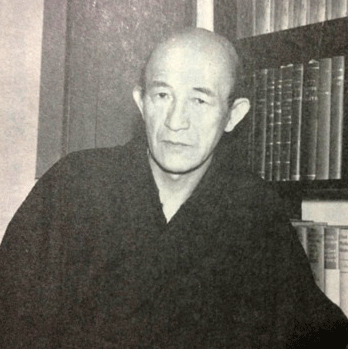
This momentous shift to establish reflective consciousness as the ground of certainty marked the final break between the modes of thinking of the East and the West. “This did enable the image of the world we find in modern natural science to come about and did open the way for the control of nature by scientific technology. But it had other consequences. To the self-centered ego of man, the world came to look like so much raw material. Each individual ego became like a lonely but well fortified island floating on a sea of dead matter” (Nishitani).
It is ironic that Descartes’s move to set up the field of reflective consciousness as a “ground of certainty” for science, which, after all was expected to improve our lives, has ended up colonising our whole lives, and becoming an existential predicament where we feel alone surrounded by dead matter. Life itself has been snuffed out of a world that has become purely physical. And with it, the soul, that is, psychology. Contemporary scientists now speak of all psychological states as having their roots in biochemical algorithms.
The theory of relativity and quantum physics have now opened a path to a reconnection with traditional views still alive in the East

Descartes had cleared the way for the work of Isaac Newton (1642-1726), but in the past century, Newton’s views have been challenged by the theory of relativity and quantum mechanics. These have revolutionised the way the universe is understood, and many of the questions they have raised have not as yet found answers. Among the contemporary physicists involved in quantum mechanics, there are a few who have turned to traditional Asia – India as well as China – in their search for answers. Yuasa was able to meet these pioneers on the occasion of conferences he organised in the eighties. Overcoming Modernity includes pages on the views of Wolfgang Pauli, David Bohm, and Ilya Prigogine, as well as Carl Jung.
The final recognition in the West of a world of energy behind the world of matter that appears to our senses, is of momentous significance. It has the potential to shatter the whole metaphysical edifice of the Western mode of thinking. Unfortunately, though Einstein’s theory of relativity and quantum mechanics are now over a century old, they are still not taught in secondary schools. Even among modern physicists, besides the scholars whose names are mentioned above, they have not led to a world-changing revolution in the mainstream mode of thinking of the West. The issue here is that the West remains shackled to the observation of the world from outside, as an object. By and large, modern physics are still caught up in what Nishida calls “object logic.” The Copenhagen School, which represents mainstream contemporary physics, still holds what Max Planck, who won the Nobel Prize in Physics for the discovery of energy quanta in 1918, is reported to have stated, namely, that “what cannot be measured is not real.” This School, which represents mainstream contemporary physics, has not budged from Aristotle’s equation of “being” with having a name (or a mathematical formula). In other words, “being” still resides in the abstract concept or the measurement, the word or the equation, not in the concrete dynamic living reality. Data, i.e., numbers, graphs, statistics, projections, etc are the really real reality the West is still looking at.
Ki-energy: a life-energy that has both physical and psychological characteristics.
Yuasa’s last move therefore is a return to Chinese traditional views on qi-energy which are still alive today. There, the full physical-life-psychological continuum is still understood. Qi-energy flows through all things in the universe, and that includes us. So, as it flows through the human body, it connects what is so carefully kept separate in the West.
Yuasa writes: “External ki-energy connects the human body with the environment by means of the ki-energy flowing through the meridians. The psychological function at the unconscious level is connected to matter in a form charged by these characteristics. Ki-energy, as of now, is reported in terms of various properties, such as far-infrared rays, magnetic fields, and photons. But since they are carriers of information, when seen from the standpoint of psychology, the issue becomes an inquiry of what characteristics of psychological function are emitted, as they are, I think, charged by affective characteristics.”
Postmodernism

Though metaphysical thinking is still embedded in our everyday mode of thinking, and remains the basis of western science, among Continental philosophers at least, it had been dealt a devastating blow by Nietzsche’s provocative statement that “God is dead.” What “God” stands for here is not just the Christian deity. It is, more radically, the metaphysical worldview which Christianity had borrowed from Plato. Nietzsche’s statement shook the very foundations of over two thousand years of European philosophy, and led in time to the emergence of postmodernism, where what had been thought to be a transcendent “divine” rational order is now said to be a man-made construct, a mere narrative, a story. The postmodern view is slowly seeping into communities, where it encounters resistance among people who see it as an attack on facts, and a relativisation of just about everything, leading to a weakening of values. Anyone’s story tends to be regarded as being as good as anyone else’s story! This is, of course, an oversimplication of postmodern thinking, but it cannot be denied that there are serious flaws in Western postmodernism.
In traditional East Asia, where metaphysical thinking was unknown, no comparable disregard for facts and values ever developed. The difference is that, as noted above, in the East the assumption is that, to live well, one needs to adjust one’s way of living in order to “flow with all things.” So, to start with, one needs to purify one’s self from ego-centred attachments to open up to “all things” and learn from them. A disciplined lifestyle based on restraint with an open mind and an open heart, is a pre-requisite for anyone wishing to relate to the world in an intelligent and compassionate manner. As far as I know, postmodern authors are not inviting their readers to undertake any “training of the mind and the heart.” In the absence of such training, postmodernism will only lead to an erasure of the world of facts. Since in the West few are prepared to accept the need to “adjust,” and instead still hold that the only way to survive is to “control,” one will use “stories” to literally “manufacture” reality: the world is the way I say it is. Being “is” in a new radical way in that simple statement. “The pandemic is over, because I say so.”
“Ki-energy is not something that is thought (i.e., a theoretical construct), but is developed inseparably from the practical experience of the concrete bodily technique”
Yuasa has called for more research on ki-energy. He does not, however, simply called for academic theoretical research. He himself learned to practice qigong (Jap. kiko). In a worldview where each of us has to learn how to relate to a dynamic world created and maintained by qi-energy, we need to learn how to balance the yin and the yang, and this requires a lot more than textual learning. “Ki-energy is not something that is thought (i.e., a theoretical construct), but is developed inseparably from the practical experience of the concrete bodily technique (or performing technique).” Yuasa uses the word qigong in a wider sense than we are used to in the West. It is synonym with qi-energy training as such, and includes mind training (meditation methods such as Zen), bodily training (taijikuan) and the study and understanding of physical nature. Though Yuasa seems to focus on bodily qi-training, Westerners should not reduce qigong and taichi to mere physical training the way they have done with Indian yoga. In Yuasa’s list, mind training – that is, meditation, and Zen practice as a whole – precedes bodily training. What is called for is a whole new way of encountering the world, one that, as Nishitani describes it, break through reflective consciousness – where subject and object are separated – to reach a more elemental layer of consciousness where that separation is overcome, and thinking as well as engaging with the world are rooted in empathy.
Human civilisation has become an edifice without a foundation
In many ways, we are at a stage in history which bears comparison with the Axial Age, defined by Karl Jaspers as the period from the 8th to the 3rd century BCE. It referred to the moment in history where were founded the religions and philosophies that we have explored above – Greek philosophy, Daoism, Vedanta, and Buddhism. It was a time when the availability of new, lighter, cheaper iron weapons led to deadly wars, migrations of populations over large swathes of land, and the formation of empires. In our world, these are mirrored by the new availability of nuclear armaments and sophisticated new technologies, migrations of people fleeing poverty and the destruction of their economy due to climate change, while a global empire is being set up covering the whole planet.
The Axial Age saw socio-political cultural systems based on villages being pushed aside by socio-political systems based on towns, cities, and states. Today, the socio-political system of the state is being pushed aside by multinational corporations operating at the global level. In other words, a world is coming to an end, and another one must arise from its ashes.
Our current predicament has to deal with a metaphysical order that has lost its way. The West’s calculative mode of thinking inherited from its metaphysical worldview has now spread worldwide, and become the basis of technology, which everywhere is now relied upon to ensure the survival of fast growing populations. But, with Nietzsche and the postmodern thinkers, the worldview that gave it rise has collapsed. So, human civilisation has today become an edifice without a foundation. A mode of thinking meant to secure our future through controlling nature has produced a world where the destruction of nature is out of control, jeopardizing our very survival. Whatever frustration postmodernism has caused in some of us, few are those who do not now agree that the way we see the world is a human-made story. But postmodernism alone is not going to take us anywhere soon.
When turning to the East in search of inspiration, we are emulating the move made by the Buddha when he joined the sramanic communities. He was going back to practices that had roots in the shamanic rural communities that were being threatened by the new masters of the Indian subcontinent. What the Buddha undertook was not simply a resurrection of these old practices for the sake of what we would now call “identity politics.” Instead he was able to use these old traditional practices to build something new – an ethical path of practice that would support life in the new urban centres that had just emerged. The sramanic teachers he had met in the forest were not able to do this. The Ajivikas, led by Gosala, believed that the life-monad had to reincarnate in all 72,000 life-forms before being liberated, and no amount of good deeds would shorten the long wait ahead. The Jains, led by Mahavira, did seek liberation through restraint, but they understood it as physical separation through death itself, and embarked on twelve year “retreats” leading to death through starvation! Even though, during Asoka’s reign, the Ajivikas were still ahead of the Buddhists in terms of numbers (because they offered techniques to acquire special powers), Buddhism provided Asoka with the ethical discipline he needed to set up his empire on the basis of strong values.
This is also the task that lies ahead of us today. Yuasa is obviously right to call for more research on qi-energy, as it appears that, even in East Asia, it is in decline. But what is really called for, in my view, is a radical reorientation of our mode of thinking. Calculative thinking to optimise gain is not only practiced by corporations. We all indulge in it when we compare prices, look for “deals,” assess success in terms of what we own, and progress in terms of a more efficient exploitation of resources. And even though calculative thinking started from the top – the corporations, the government, even the intellectual elite – individual behaviour, at every level of society, amplifies it, and makes it possible for the corporate world to ignore the limits of the planet. As “being” is in the words, the formulas, the graphs, etc. everything is possible on a piece of paper or a screen! But it is unfortunately not the same in the concrete world.

Critical, yet not calculative. Focused, yet unattached. Open to the world and creative while rooted in empathy.
Daoist and Buddhist practitioners have taught that the mode of empathetic intuition is required to remain in touch with concrete reality. They have also taught that intuition requires training, as reflective consciousness needs to be broken through to reach a more elemental layer of consciousness where living and thinking are rooted in empathy. In other words, they have provided the teachings and practices required to carry out what the East calls “self-cultivation,” which is really the “cultivation of egolessness.” As we now more or less agree that whatever view we have of the world is a construct, it is clear that the construction of these views must be accompanied by some form of “self-cultivation.” But whereas the new religions of the Axial Age emerged in association with groups of followers, meeting in dedicated temples or churches, with collective ceremonies and rituals as well as sermons or dharma talks, self-cultivation in our day should be based on individual study and practice. In a global world, membership of any group, be it a party, a religion or a nation, has no meaning because the very idea of “belonging” entails an oppositional, and often confrontational, stance with regards to other groups, and in a global world, there is only one group. This one group is that of the living world itself, including animals and plants, and even the inanimate elements on which living things depend in order to live. In that “biotic society,” as Imanishi calls it, the welfare of the whole requires the welfare of each part while the welfare of each part is reflected in the welfare of the whole. So we can create “heaven” by harmonising our internal microcosm. As we move through our daily activities, we must remember that we should remain critical, yet not calculative, focused yet unattached, open to the world, and creative while rooted in empathy. All the things we see are empty (of substance), yet all these things, which constitute “our” world, are for us (existentially) real, and deserve our attention and our care.
A creative “spiral-like path of change”
In one of his philosophical essays, Nishida emphasises the need for us to become the creators of our world. He describes it as a “spiral-like path of change” whereby we are at once “formed” by our environment, and yet, at the same time, we are also able to “re-formed” our environment. Note that what Nishida refers to as the “subject” is not a substantive entity, but an activity, or function.
“In the historical-social world subject and environment confront each other and form each other. This means that past and future oppose each other in the present, as unity of opposites, and move from the formed towards the forming … The subject forms the environment. But the environment, though formed by the subject, is more than a part of the subject … Our life is being poisoned by that which it has produced itself … In order to survive, the subject must, again and again, begin a new life. It must, as a species of the historical world of unity of opposites, become historically productive. It must become a spiritual forming force of the historical world” (Intelligibility and the Philosophy of Nothingness – Three Philosophical Essays)
Sources
Yuasa Yasuo – Overcoming Modernity – Synchronicity and Image-Thinking (2008)
Hans-Georg Gadamer, “Heraclitus Studies” in The Presocratics After Heidegger (Ed. David C. Jacobs 1999)
Thomas McEvilley – The Shape of Ancient Thought (2002)
Robert E. Carter – The Nothingness Beyond God (a study of Nishida’s thought 1997)
Robert E. Carter – Encounter with Enlightenment: A Study of Japanese Ethics (2001)
Nakamura Hajime – Ways of Thinking of Eastern Peoples (1964)
Bret W. Davis – “Forms of Emptiness in Zen” (Research paper)
Nishitani Keiji – Religion and Nothingness (1982)
Nishida, Kitaro – Intelligibility and the Philosophy of Nothingness – Three Philosophical Essays (1958)
A summary of Yuasa’s discussion of the ideas of Wolfgang Pauli, David Bohm, and Ilya Prigogine, as well as those of Carl Jung, is presented on the next page of this website: A Living Universe – Qi and Quantum.
For a study of the thought of Nishida and Nishitani, you may have a look at https://thekyotoschoolofphilosophy.wordpress.com
